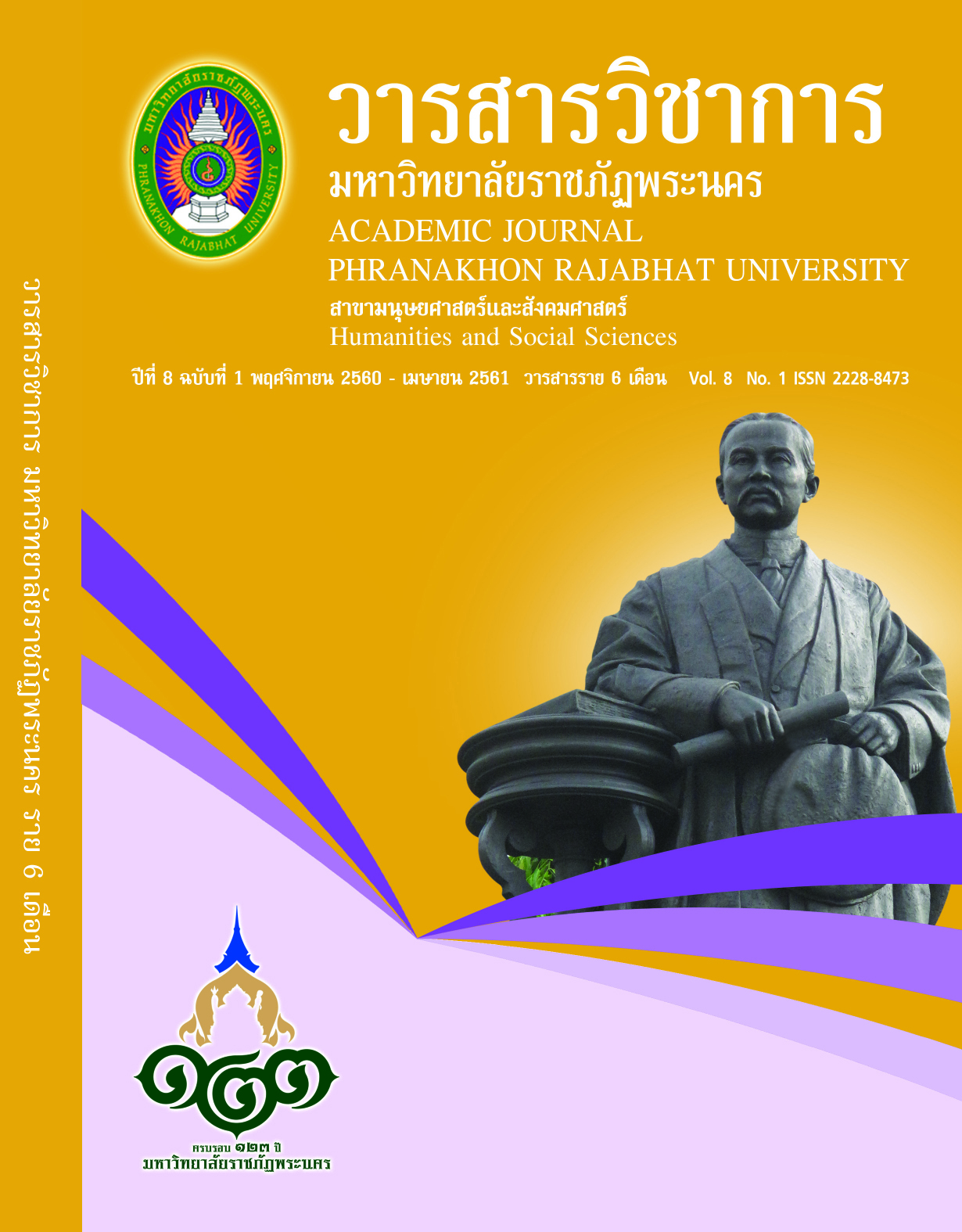The Linear Structural Relationship of Research - Supported E ff ificiency Factors in Secondary Educational Service Area 7
Keywords:
Structural Relationship, Research – Support, EfficiencyAbstract
The purpose of this research is to study the Research-supported efficiency factors in SECONDARY EDUCATIONAL SERVICE AREA 7. The population in this research is supervisors and teachers with research in SECONDARY EDUCATIONAL SERVICE AREA 7. The fiscal year is 2015. The total number of people is 1171 guy. The sample used in this study is supervisors and teachers with research in SECONDARY EDUCATIONAL SERVICE AREA 7. The fiscal year is 2015. The total number of sample is 313 guy. The independent variable in this study is agencies factor, personal factor, process management factor and Other factors. The dependent variable in this study is research efficiency. Tools used in research is multiple choice questionnaire (Rating Scale) data analysis using the average ( ), Standard deviation (S.D.) and Statistics and data analysis of respondents and test hypotheses in article 1. The analysis Confirmatory Factor Analysis (CFA) test hypotheses in article 2. Analysis using the Pearson correlation (Pearson’ s product moment correlation). Statistical analysis with LISREL.
The results of research:
- The factors that support research and four factors of research at a high level.
- The quality and benefits of research can affect the performance of research on a large scale.
- The results of confirmatory factor analysis (CFA) of independent variable have 4 factors is 1) agencies factor 2) personal factor 3) process management factor 4) Other factors. And the results of confirmatory factor analysis (CFA) of dependent variable have 2 factors is 1) The benefits of research. 2) The quality of research.
- The analysis of the linear structural relationship of research-supported efficiency factors in SECONDARY EDUCATIONAL SERVICE AREA 7 is Every factor correlated structure.
References
Kanyarat Aeumumporn. (2005).“Factors affecting research production quantity of Payap University's Staff” Payap University Chiang Mai.
Nongrak Wiratchai. (1994). Linear Structure Relationship model (LISREL): Statistical analysis for social and behavioral research, Baangkok: Chulalongkorn University Printing House.
Boonthum Kijpredaborisut. (2005). Research for teacher. Bangkok: Suweeriyasan printing.
Boonthum Kijpredaborisut. (2005).Technique for developing research instrument for data collection. (6th Edition). Bangkok: Chamchuri Print.
Pongpan Traimongkolkul. (2001). Classroom Research. Bangkok: Kasetsart University Press.
Veerapol Chalatyaem. (2001). “Classroom Action Research of primary school teacher in Nong Bua Lumpoo Secondary Educational Service” Master Thesis, Faculty of Educational Research, Graduate School, Maha Sarakham University
Sombat Tayraukham. (2008). Research for Humanities and Social Sciences. (2nd Edition). Kalasin: Pasarn print.
National Research Council of Thailand. “Integrated research strategy in medium stage 2005-2007”, 2006.
The Department of Education Reform (2002). Educational Service Area (PESA): For education quality. (2nd Edition). Bangkok: The Department of Education Reform.
Supang Chantavanich. (2007). Qualitative research.(15th Edition). Chulalongkorn University Printing House.
Suwimon Wongwanich. (2003). Classroom Action Research. (5th Edition). Bangkok: Darnsutha Press.
Downloads
Published
How to Cite
Issue
Section
License
"บทความวิชาการในวารสารฉบับนี้ ถือเป็นความรับผิดชอบของผู้เขียนเท่านั้น"
สงวนลิขสิทธิ์ตามพระราชบัญญัติลิขสิทธิ์




